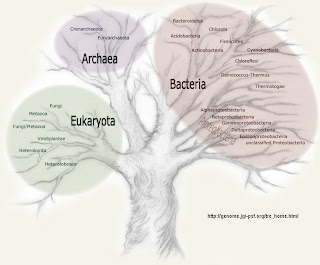 There have been dozens of studies on the possible harmful effects of Roundup®. There are many well-funded organizations and tons of lawyers who would like nothing better than to sue Monsanto into bankruptcy. Given the millions of farmers and suburban gardeners who slop Roundup® on themselves on a regular basis, you'd think it would be easy to come up with some who have died of cancer or, at least, suffered serious health problems.
There have been dozens of studies on the possible harmful effects of Roundup®. There are many well-funded organizations and tons of lawyers who would like nothing better than to sue Monsanto into bankruptcy. Given the millions of farmers and suburban gardeners who slop Roundup® on themselves on a regular basis, you'd think it would be easy to come up with some who have died of cancer or, at least, suffered serious health problems.Hasn't happened. Most of the scientific studies find no harmful effects of Roundup® on humans. Here's a bit from a study done for THE COMMONWEALTH OF MASSACHUSETTS in 2003.
TOXICITY REVIEWYou may not like Monsanto and genetically-modified food for ethical reasons or because the company exploits third-world farmers. These are valid, if controversial, reasons for opposing the spread of genetically-modified crops. Personally I don't have a problem with genetically modified foods, but I do have a problem with the power of large international for-profit companies.
Acute (Mammalian)
Glyphosate has reported oral LD5Os of 4,320 and 5,600 mg/kg in male and female rats (15,4). The oral LD5Os of the two major glyphosate products Rodeo and Roundup are 5,000 and 5,400 mg/kg in the rat (15). A dermal LD5O of 7,940 mg/kg has been determined in rabbits (15,4). There are reports of mild dermal irritation in rabbits (6), moderate eye irritation in rabbits (7), and possible phototoxicity in humans (9). The product involved in the phototoxicity study was Tumbleweed marketed by Murphys Limited UK (9). Maibach (1986) investigated the irritant and the photo irritant responses in individuals exposed to Roundup (41% glyphosate, water, and surfactant); Pinesol liquid, Johnson Baby Shampoo, and Ivory Liquid dishwashing detergent. The conclusion drawn was that glyphosate has less irritant potential than the Pinesol or the Ivory dishwashing liquid (120).
Metabolism
Elimination of glyphosate is rapid and very little of the material is metabolized (6,106).
Subchronic/Chronic Studies (Mammalian)
In subchronic tests, glyphosate was administered in the diet to dogs and rats at 200, 600, and 2,000 ppm for 90 days. A variety of toxicological endpoints were evaluated with no significant abnormalities reported (15,10). In other subchronic tests, rats received 0, 1,000, 5,000, or 20,000 ppm (57, 286, 1143 mg/kg) in the diet for 3 months. The no observable adverse effect level (NOAEL) was 20,000 ppm (1,143 mg/kg) (115). In the one year oral dog study, dogs received 20, 100, and 500 mg/kg/day. The no observable effect level (NOEL) was 500 mg/kg (116).
etc.
Express your opposition, if it's rational and scientifically based, but don't fall into the trap of opposing GM foods because you think Roundup® is dangerous. This kind of opposition (see below) is just plain silly. It is a superstitious, anti-science, way of thinking.
If You Think Monsanto's Roundup is a Safer Pesticide,[from Everything You Never Wanted to Know About Monsanto's Modus Operandi (M.O.)]
Please read the articles and papers on this page! Roundup is a pesticide as defined by the EPA.
If you're still not convinced that Roundup is a highly toxic and persistent pesticide, read on, while at the same time remembering the other contributions that Monsanto has made to society such as:
Saccharin, Astroturf, agent orange, dioxin, sulphuric acid, polychlorinated biphenyls (PCBs), plastics and synthetic fabrics, research on uranium for the Manhattan Project that led to the construction of nuclear bombs, styrene monomer, an endless line of pesticides and herbicides (Roundup), rBGH (recombinant bovine growth hormone that makes cows ill), genetically engineered crops (corn, potatoes, tomatoes, soy beans, cotton), and it's most significant product to date; Lies, Factual Distortions and Omissions.























